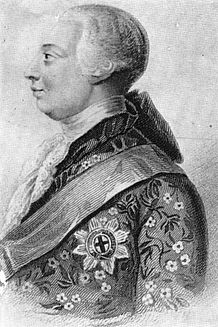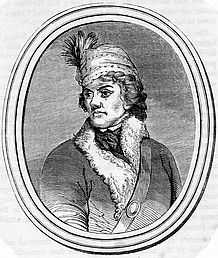Figure 7: King George III
Sometimes publishers found that their instincts to use the least expensive of visual alternatives comported nicely with the literary intentions of their authors. Waitt’s engraving of King George III for Frost’s Pictorial History of the United States, for instance, was an incompetent rendering of the least flattering of the many dozens of procurable images of the king from which Walker might have chosen. [Image 27] For nineteenth-century readers of Frost’s Pictorial History of the United States, this awkward representation could have been viewed in only one way, as a political statement, because its inadequacies were too glaring in comparison with the original painting to be attributed to poor craftsmanship merely. [Image 28 ].
For those who may not have known the widely circulated archetype of George III, comparisons internal to the text with the triumphs of other portraits (such as that of Thaddeus Kosciusko) would have sufficed to make the political point. [Image 29]. Additionally, Frost’s text vilified King George III in ways that suggested a calculated strategy of character assassination. In his study of the relationship between words and images in texts, W. J. T. Mitchell refers to “disjunctive” relationships (illustrations that bear little relationship to the texts in which they are included) and “synthetic” relationships (pictorial devices that obscure the distinctions between writing and drawing).[38] Frost’s Pictorial History of the United States revealed both of these tendencies as well. Such variations in the style and tone of the illustrations and the inconsistencies they created between visual imagery and text underscored the power and the limitations of pictorial technique in the 1840s.



